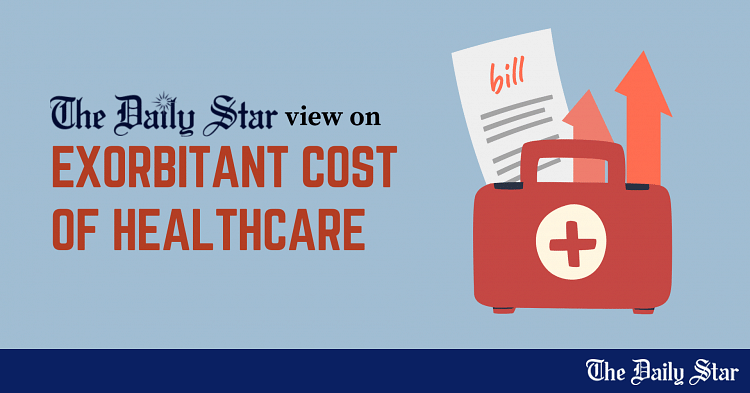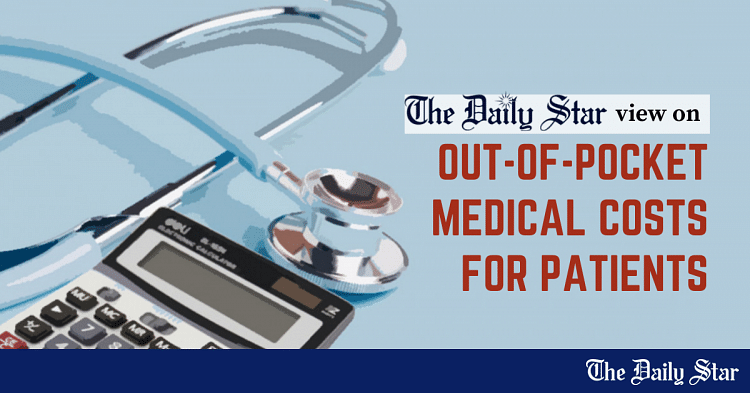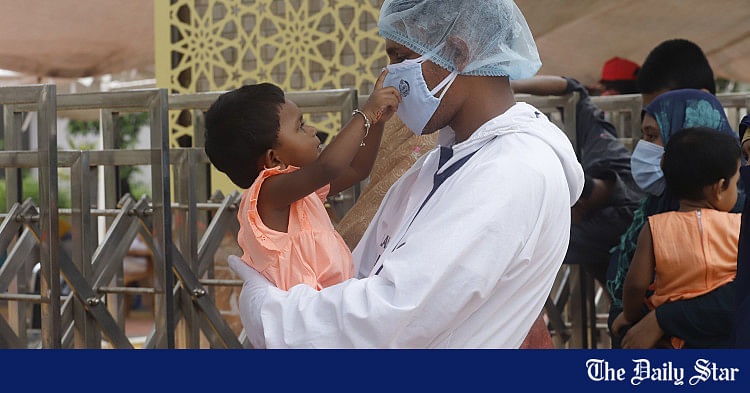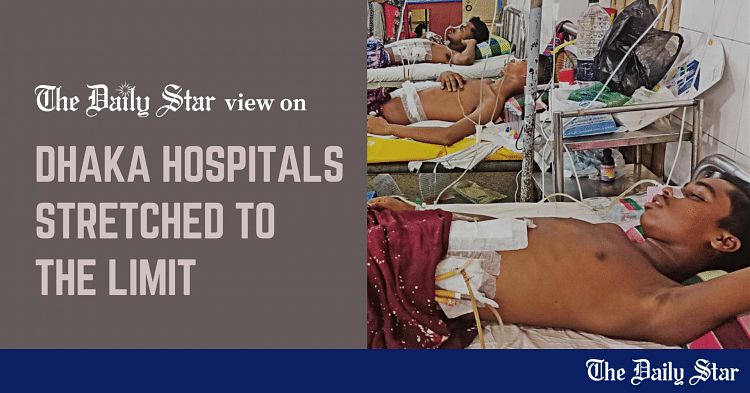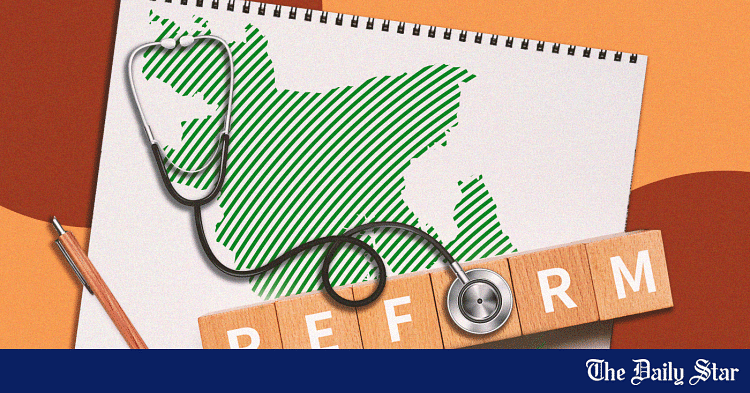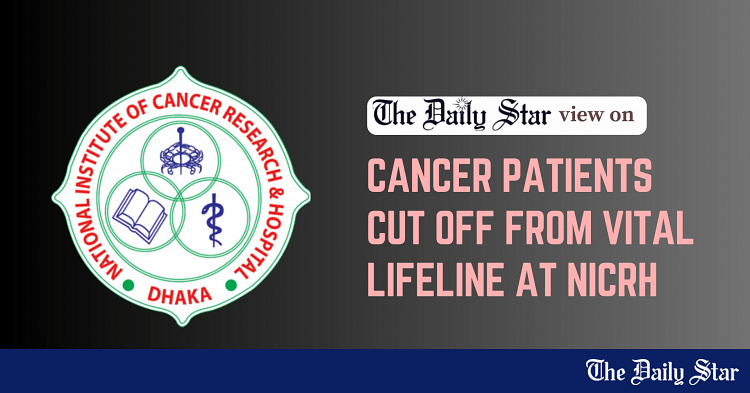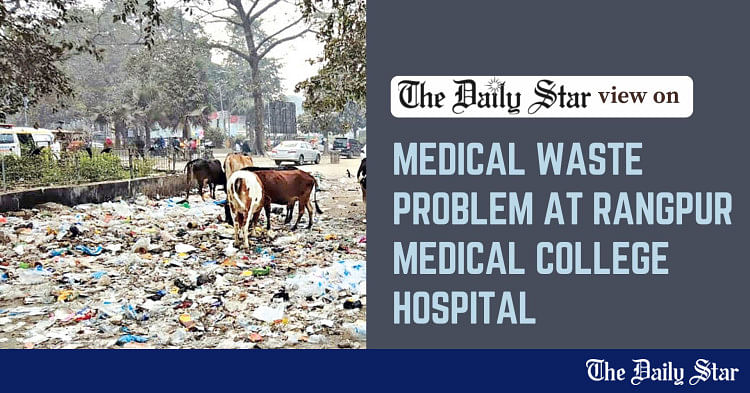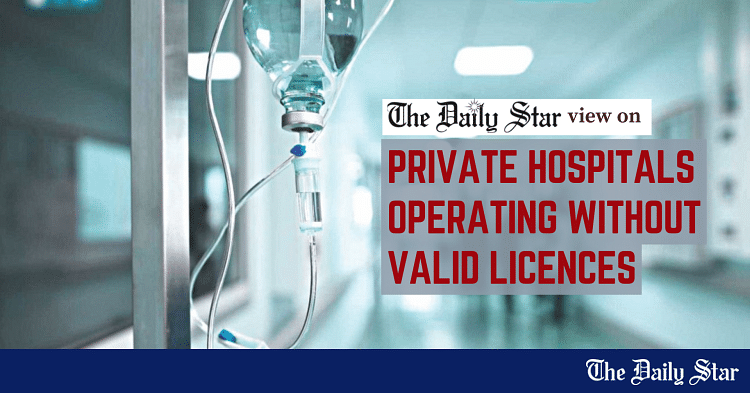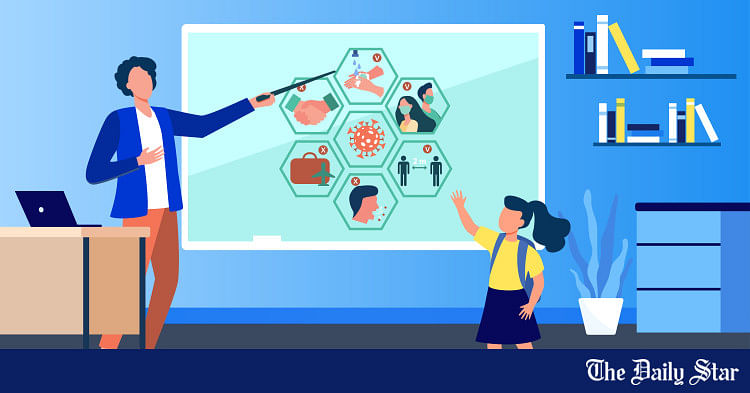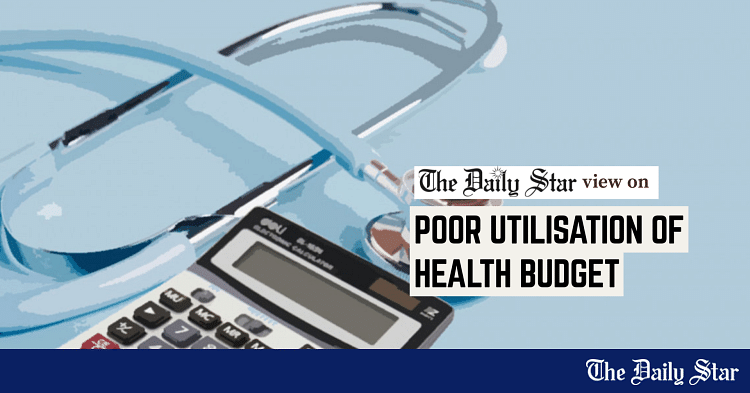Saif
Senior Member
- 13,746
- 7,411
- Origin

- Axis Group

Full-fledged cancer treatment facilities need of the hour

High-quality cancer drugs are produced in Bangladesh. Oncologists and physicians are also available. However, the country is lagging in putting in place an adequate number of full-fledged facilities to treat patients suffering from such diseases.
The missing link exists although cancer patients are on the rise in Bangladesh in line with global trends and hospitals and clinics have flourished.
Cancer is already a leading cause of death worldwide, accounting for nearly 10 million deaths in 2020, or nearly one in six deaths. The most common cancers are breast, lung, colon, rectum and prostate cancers, according to the World Health Organisation (WHO).
Cancer cases are expected to rise 77 percent by the middle of the century, the International Agency for Research on Cancer (IARC), a specialised branch of the WHO, said in February, highlighting the growing burden of the disease.
There are predicted to be more than 35 million cancer cases during 2050, up from the estimated 20 million in 2022, the agency said.
The increase reflects both population ageing and growth, as well as changes to people's exposure to risk factors. Tobacco, alcohol and obesity are key factors, along with air pollution.
Currently, Bangladesh has 13 lakh to 15 lakh cancer patients, while around two lakh new patients are diagnosed with the diseases each year, figures from the National Center for Biotechnology Information showed.
There are around 240 oncologists in Bangladesh. Treatment is available in 19 hospitals, and 465 beds have been set aside for chemotherapy at the oncology and radiotherapy departments.
"There is no shortage of oncology surgeons or specialists in Bangladesh," said Prof Golam Mohiuddin Faruque, president of the Bangladesh Cancer Society.
Besides, locally manufactured generic versions of oncology drugs are similar to the products made by multinational companies in terms of quality.
"However, there is a lack of radiation therapy facilities at hospitals as it is very expensive," he said, adding that it costs around Tk 40 crore to set up such units.
Currently, 40 radiotherapy facilities, including those at government hospitals, are available against the need for 300, Faruque said. Private hospitals treat 67 percent of cancer patients while the rest receive services from state-run hospitals.
According to Faruque, patients could see an oncologist for only Tk 10 at a government hospital or for Tk 1,000 to Tk 1,500 at a private hospital.
Drugs have also become easily available during the last decade as pharmaceutical companies have taken initiatives to manufacture oncology products. "As a result, the cost of treatment has come down by two-thirds during the decade," Faruque said.
Since the number of cancer patients is rising, the government is building treatment facilities in eight divisional hospitals, which may be commissioned next year.
Training general physicians on cancer warning signs and setting up early detection centres at medical colleges and the district level are underway. Piloting of cervical cancer vaccination has recently been completed.
The International Centre for Diarrheal Disease Research, Bangladesh (icddr,b), BRAC, Ahsania Mission Cancer Hospital, Bangabandhu Sheikh Mujib Medical University, Bangladesh Cancer Society, ASHIC Foundation, Amader Gram, AK Khan Healthcare Trust, and Chattogram-based Cancer Support Society (Cansup) run programmes for early detection.
Bangladesh has agreed to reduce premature mortality from cancer as part of the 2030 UN Agenda for Sustainable Development.
Industry people say improving the cancer treatment scenario overnight is not an easy task. However, policymakers should show their interest in expanding the facilities and pushing the agenda forward since cancer diseases have huge health and financial impacts.
High-quality cancer drugs are produced in Bangladesh. Oncologists and physicians are also available. However, the country is lagging in putting in place an adequate number of full-fledged facilities to treat patients suffering from such diseases.
The missing link exists although cancer patients are on the rise in Bangladesh in line with global trends and hospitals and clinics have flourished.
Cancer is already a leading cause of death worldwide, accounting for nearly 10 million deaths in 2020, or nearly one in six deaths. The most common cancers are breast, lung, colon, rectum and prostate cancers, according to the World Health Organisation (WHO).
Cancer cases are expected to rise 77 percent by the middle of the century, the International Agency for Research on Cancer (IARC), a specialised branch of the WHO, said in February, highlighting the growing burden of the disease.
There are predicted to be more than 35 million cancer cases during 2050, up from the estimated 20 million in 2022, the agency said.
The increase reflects both population ageing and growth, as well as changes to people's exposure to risk factors. Tobacco, alcohol and obesity are key factors, along with air pollution.
Currently, Bangladesh has 13 lakh to 15 lakh cancer patients, while around two lakh new patients are diagnosed with the diseases each year, figures from the National Center for Biotechnology Information showed.
There are around 240 oncologists in Bangladesh. Treatment is available in 19 hospitals, and 465 beds have been set aside for chemotherapy at the oncology and radiotherapy departments.
"There is no shortage of oncology surgeons or specialists in Bangladesh," said Prof Golam Mohiuddin Faruque, president of the Bangladesh Cancer Society.
Besides, locally manufactured generic versions of oncology drugs are similar to the products made by multinational companies in terms of quality.
"However, there is a lack of radiation therapy facilities at hospitals as it is very expensive," he said, adding that it costs around Tk 40 crore to set up such units.
Currently, 40 radiotherapy facilities, including those at government hospitals, are available against the need for 300, Faruque said. Private hospitals treat 67 percent of cancer patients while the rest receive services from state-run hospitals.
According to Faruque, patients could see an oncologist for only Tk 10 at a government hospital or for Tk 1,000 to Tk 1,500 at a private hospital.
Drugs have also become easily available during the last decade as pharmaceutical companies have taken initiatives to manufacture oncology products. "As a result, the cost of treatment has come down by two-thirds during the decade," Faruque said.
Since the number of cancer patients is rising, the government is building treatment facilities in eight divisional hospitals, which may be commissioned next year.
Training general physicians on cancer warning signs and setting up early detection centres at medical colleges and the district level are underway. Piloting of cervical cancer vaccination has recently been completed.
The International Centre for Diarrheal Disease Research, Bangladesh (icddr,b), BRAC, Ahsania Mission Cancer Hospital, Bangabandhu Sheikh Mujib Medical University, Bangladesh Cancer Society, ASHIC Foundation, Amader Gram, AK Khan Healthcare Trust, and Chattogram-based Cancer Support Society (Cansup) run programmes for early detection.
Bangladesh has agreed to reduce premature mortality from cancer as part of the 2030 UN Agenda for Sustainable Development.
Industry people say improving the cancer treatment scenario overnight is not an easy task. However, policymakers should show their interest in expanding the facilities and pushing the agenda forward since cancer diseases have huge health and financial impacts.





